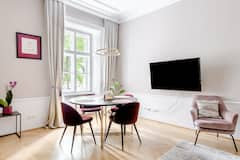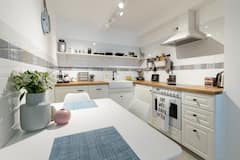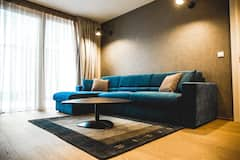The Schönbrunn Palace complex is perhaps the highlight of the Viennese tour, and a must-see tourist attraction. The Schönbrunn complex represents a bold attempt of the Hapsburgs to surpass the famous French Versailles complex in its magnificence, which was prevented by the lack of sufficient funds due to numerous wars that the empire waged. Still, the Schönbrunn complex induces admiration and its grandeur proves why it was the favourite royal residence of the members of the Hapsburg dynasty.
Schönbrunn Palace

The Schönbrunn is somewhat sidelined from the main tourist paths in Vienna, and the easiest way to reach it from the city centre is by the U3 metro line; the ride takes around 15 minutes. Upon alighting at the Schönbrunn metro station (in the direction towards the Hutteldorf terminus), you will need to take a short walk toward the complex to the south.
Today, the Schönbrunn Palace is a museum that illustrates the Hapsburgs’ way of living through a combination of austerity, numerous works of art (paintings, sculptures, busts…), etc. Its overall elegance and opulence describes the personalities of certain Austrian rulers, and later Austro-Hungarian rulers; in particular Maria Theresa and Franz Joseph I. The Schönbrunn Palace comprises around 1,450 rooms where up to 1,000 people used to live at a time. However, not all of them are open to the public.
A look into Vienna's history

The palace rooms abound with a variety of subtle and striking details, encompassing stucco formations, gilded patterns, numerous portraits of the royal members, depictions of historic events, authentic furnishings, and more. The tour takes the visitors through the official and study rooms, as well as the rulers’ private rooms. It starts with the Guard Room, where uniforms of the palace guards that belonged to different corps are displayed.
The Millions Room, which used to be Maria Theresa’s private room, is the highlight of the tour! It is assumed that the name is derived from the room’s cost in crowns. The room is paneled in rare Chinese rosewood, and features Indo-Persian miniatures framed with the Rococo ornaments. The bust of the empress’s youngest daughter Marie-Antoinette, which eventually became a French queen, is displayed here.
Another Maria Theresa’s private room was Chinese Cabinet, where the empress enjoyed her leisure time. It features lacquered panels decorated with gold and various Chinese objects.
The Mirror Hall used to be a stateroom of Maria Theresa, featuring Rococo decoration and crystal mirrors, which gave the room its name. In this room, a six-year-old boy named Wolfgang Amadeus Mozart delighted the Empress with his musical performance.
Other highlights of the palace are various rooms where the Emperor Franz Joseph I conducted his “Spartan“ way of living, received high officials, and withdrew to privacy when his wife, Elisabeth, was away from the court and when she was murdered. The room where he died in 1916 remains completely authentic.
The facade of the palace features the Baroque architectural style. The palace oversees a vast parkland area, with various distinctive details. During your exploration, you shall see an imitation of the Roman ruins, allegorical fountains, diverse patterns that form various shapes and paths (a labyrinth is one such) dotted with flowerbeds, lawns and the lined trees, and the most famous Gloriette (a triumphal arch with arcades) in the world. The Gloriette is located atop the hill, offering great panoramic views over the park, Schönbrunn palace and Vienna. Within the boundaries of the park, you can also find the zoo and the Europe’s largest Palm House, with numerous varieties of exotic plants.
Value for money

Tickets at disposal for the palace visitors are the Imperial Tour (20 rooms) ticket – 13 EUR (approximately 14.50 USD), and the Grand Tour (40 rooms) – 16 EUR (17.50 USD) per person. A few additional passes, which include multiple venues within the complex, are also at disposal.
The value-for-money Sisi ticket at 25.50 EUR (28.50 USD) allows its holders to combine visits to the Schönbrunn Palace, the Hofburg and the Imperial Furniture Museum. The Sisi ticket holders are allowed to tour the Grand Tour. In addition, Schönbrunn Palace visitors with the Sisi tickets need not wait in line. Audio guides are included in the price of a ticket.
In general, the Schönbrunn Palace is open to visitors from 08:30 am to 05:30 pm. Gardens are free of charge but do take note that photography inside the palace isn’t allowed.
You might be interested in these Airbnbs!
Learn more about Vienna!
The best time to visit the Schönbrunn is during spring and summer, when the splendour of the palace is complemented with the majestic bloom of the park’s diverse vegetation.
History
Get Trip101 in your inbox
Unsubscribe in one click. See our Privacy Policy for more information on how we use your data




















Create an account to